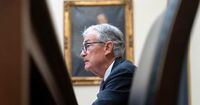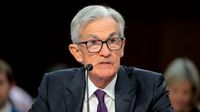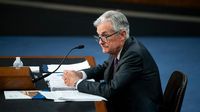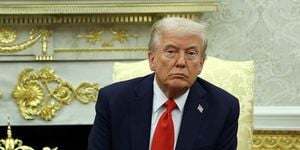The Federal Reserve is set to announce its first interest rate decision on March 19, 2025, since the onset of President Donald Trump's trade war, which has already sent ripples of uncertainty through the economy. Investors are anticipating that the central bank will leave rates unchanged as concerns about inflation and declining consumer confidence mount.
Recently, Fed Chair Jerome Powell acknowledged that the imposition of tariffs could lead to price increases, putting commodity prices under pressure. Earlier in March, the Trump administration announced a 25% tariff on goods from Mexico and Canada, though a temporary delay was put in place for some goods.
The economic landscape is further complicated by another set of duties on Chinese imports, effectively doubling previous tariffs imposed only a month prior. This embroiling trade situation has led to retaliatory tariffs from Canada and the European Union, creating a highly charged environment for investors.
Last week, the S&P 500 fell into correction territory, with a drop of over 10% since its peak in February 2025, marking the first market correction since October 2023. Meanwhile, the Dow Jones Industrial Average experienced its worst one-week drop since March 2023.
Even with these turbulent developments, signs still indicate that the economy remains in relatively good shape. A recent jobs report highlighted steady hiring and a low unemployment rate, although inflation continues to hover just above the Federal Reserve's target of 2%.
The Fed's current interest rates fall within a range of 4.25% to 4.5%, a historically high level attributed to previous rate cuts made in late 2024 as part of efforts to combat inflation. During this time, Trump had consistently urged the Fed to adopt a more accommodating monetary policy.
In January, prior to the announcement of the Fed's interest rate decisions, Trump vocalized his aspirations for lower rates during a virtual address at the World Economic Forum in Davos, Switzerland. Although the Fed chose to maintain its stance during that month, Powell declined to comment on the President's requests.
The upcoming policy decision is crucial, observed market analysts. In response to the turmoil wrought by tariffs and changing economic sentiment, economists have noted a dip in confidence among consumers, small businesses, and large enterprises. Currently, projections for U.S. economic growth have also been revised downwards by the Organization for Economic Cooperation and Development (OECD), indicating a gradual slowdown.
“We’re not on any preset course,” Powell said during a recent economic forum, underscoring the Fed's data-dependent approach as policymakers assess incoming data and market conditions.
As the Federal Reserve prepares to release its first Summary of Economic Projections (SEP) on March 19, analysts are observing closely how these forecasts will influence interest rate trajectories. With mounting concern over the potential for a recession, which administration officials have already hinted at, they see the Fed giving more clarity about expected economic conditions.
Gold, viewed as a safe haven asset, has also been under scrutiny amid rising tensions not just from trade conflicts but geopolitical uncertainties in the Middle East. Spot gold prices reached an unprecedented $3,045.24 an ounce earlier, reflecting investors' growing anxiety.
Leading up to the Fed’s decision, data indicate that inflation expectations are rising, further complicating the monetary policy landscape. Money markets are pricing in a possible U.S. rate cut in June 2025 with a 98% likelihood, reflecting trader perception as they await the Fed’s next moves.
As the afternoon unfolds on March 19, markets are set for potential volatility depending on Powell’s commentary on economic forecasts. Investors and economists alike are anticipating clear directions that will shape policy over the coming months.
In conclusion, the Federal Reserve’s impending decision comes at a critical juncture for the U.S. economy, beset by the challenges posed by tariffs and shifting consumer sentiment. The need for caution and clarity in policy responses is paramount as central bankers navigate these uncharted waters while working to achieve mandated economic stability.








